2017 Chevy Colorado ZR2 vs Toyota Tacoma TRD Pro
High-Speed Hijinks
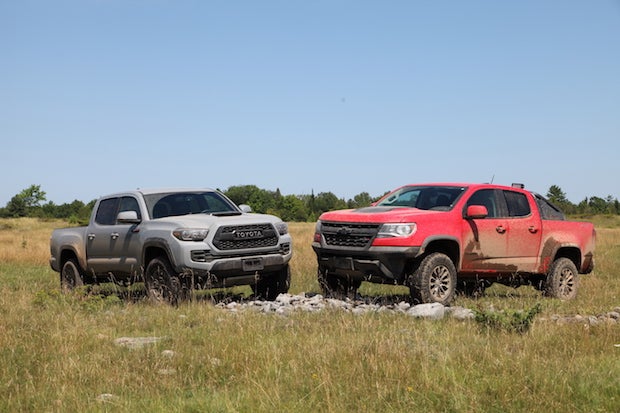
If you have dreams of racing in Baja, but lack a race team's budget, it's a good time to be in the market for a pickup truck. That is thanks to the Chevy Colorado ZR2 and Toyota Tacoma TRD Pro, two midsize off-road focused pickups with a special emphasis on high-speed desert running.
The Ford Raptor, now considered the grand daddy to both of these two young trucks, started this push into credible high-speed off-road packages from the factory, and both Chevy and Toyota have applied the treatment to their midsize pickups, each with something unique to offer would-be racers.
Get the Flash Player to see this player. |
Paper Showdown
Before we jump into the subjective aspect of these trucks, lets talk objective stats, and out of the gate, the Toyota Tacoma TRD Pro seems to have the advantage on paper. That is thanks to 9.4-inches of ground clearance at the differential and an approach angle of 35 degrees compared to the 8.9-inches of clearance in the ZR2 and the 30-degree approach.
Breakover and departure are slightly better in the Toyota, which is also rated to handle more weight: 1,175 pounds of payload and a 6,800-pound trailer. Chevy sticks the ZR2 with a 1,100-pound payload rating and 5,000 pounds of towing. Curb weight also favors the TRD Pro, though just barely, as its 4,425-pound curb undercuts the Chevy's 4734 pounds (or 4985 pounds with the diesel engine).
Now, despite the Toyota hauling more, this loss in hauling capability backs up the idea that Chevy took its truck further than Toyota when it comes to off-road preparedness, offering more wheel travel and softer springs and dampers to accommodate a beating on the trail. Not to mention, the ZR2 is fitted with locking differentials in the front and rear, again showing its commitment to making the ideal off-roader.
Packing power
The battle under the hood is won by the ZR2, with the Chevy offering a 3.6-liter gasoline-drive V6 making 308 horsepower and 275 lb-ft of torque, compared to the 3.5-liter V6 found in the Tacoma, making 278 hp and 265 lb-ft.
Chevrolet also offers the ZR2 with a small 2.8-liter Duramax diesel (the engine found in our tester), which makes less hp than the TRD Pro at 186, but over 100 more lb-ft of torque sitting at 369 lb-ft, all of which is available at 2,000 rpm.
After a hard day off-road driving both trucks, the engines actually ended up being the biggest disappointment, but more on that after we explain makes both of these little wheelers so great.
Down and Dirty
Midsize trucks are inherently ready for off-road duty thanks to their size, helping them feel nimble and lightweight on the trail and both the ZR2 and TRD Pro benefit from this, although the Toyota really takes it to heart.
Running at high speeds on rutted rocky trails, the TRD Pro feels compact and nimble, hugging the trail and communicating its every move to the driver like a small sports car. Steering feel itself is also tighter than in the Colorado, resulting in a direct connected feeling that makes the TRD Pro come alive when you're blasting over the bumps.
That is easily the Tacoma's best trait: it constantly feels pushed to the edge, making it an exciting little truck to drive. But that doesn't mean it's the best at what it does.
Standing in stark contrast, the best words to describe the Colorado ZR2 are calm and composed. Where the Tacoma's FOX shocks have it kicking the rear end out or getting its nose pointing towards a tree, the Colorado's DSSV system swallows up the ground beneath it, allowing the truck to stay flat and straight over the roughest terrain with minimal input needed from the driver.
A light steering rack and slightly vague feeling also add to that calm demeanour, as the wheel is never pulled too heavily in your hands. All of this combines to create a superhero feeling that tempts the driver to push the truck harder and faster all the time, and in our day on the trails, nothing we could do was too much for the ZR2.
At slow speeds, the ZR2 also excels, though admittedly its approach angle and ground clearance fall slightly short of the Toyota. The ZR2 makes up for it with locking differentials in the back and the front, a key for slow-speed crawling. More wheel travel also means that the ZR2 articulates better, not to mention you can get rock sliders on this truck as an option from the factory.
Toyota offers an electronic locking differential in the rear of its truck and the Crawl Control system (which controls throttle and brake for you during slow-speed off roading), but we would take two locking diffs over Toyota's technology-based crawling system any day of the week.
Grip is also an advantage in the ZR2 thanks to its standard Goodyear Wrangler Duratrac tires. In the mud, these tires offer solid slow speed grip with the tread staying mostly clear, while on loose gravel and pavement the ZR2's Wranglers seem to hug the ground better.
On the TRD Pro the stock Goodyear Wranglers with Kevlar Protection offer slightly less road noise than the ZR2, but nowhere near the same grip in the mud. It goes for on road, where the TRD Pro is much easier the break loose thanks to its tires.
Power Poor
So we've (hopefully) established that the suspension tuning in both of these trucks is impressive and makes them truly special (it is). Here's the problem: the powertrains and interiors do very little to convince us that these trucks are anything different.
In the Tacoma, the 3.5-liter V6 never feels all that powerful, not surprising when you consider it makes its 278 horsepower all the way up at 6,000 rpm, same as the standard truck. Once you lose speed off-road, say to water or sand, you can pin the throttle and the Taco feels like it's going nowhere.
On the flip side, the gas-powered Colorado has the same issue, making peak horsepower at 6,800 rpm, leaving the bottom end of the rev-range feeling sort of empty.
Our test truck came equipped with the 2.8-liter Duramax diesel, which solves the torque issue with its 369 b-ft at 2,000 rpm. Once in the mid-rpm range, the diesel has some urgency when you put your foot to the floor, able to actually power strongly through water or mud.
But it's not all good. Off the line, the diesel takes some time to really build up steam, and it makes the truck over 200 pounds heavier, which is more to hold it back.
So the biggest issue with both of these trucks? They need more power. A more powerful engine in both packages would go a long way to making them truly remarkable. Look at granddaddy Raptor. It gets a unique engine that makes more power than all the other F-150's, and it gets a special interior that includes a unique steering wheel, bolstered seats and more.
Insides
In the Toyota, you get Black TRD Pro Leather-trimmed heated front seats, a TRD shift knob and TRD floor mats. It's almost the exact same in the ZR2, which gets stitched headrests and sill plates. Neither one feels all that special compared to the standard truck, though that is a knock against the package and not on the trucks themselves.
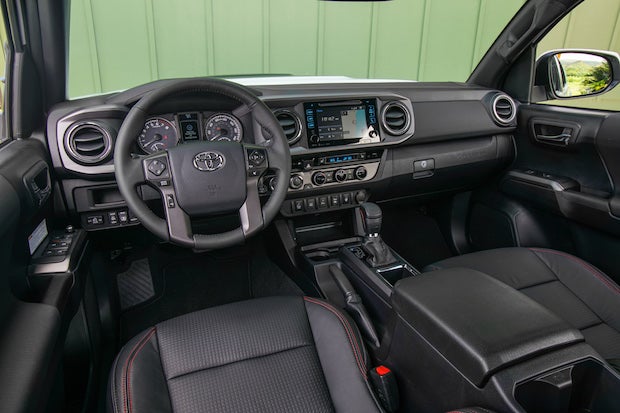
When it comes to interior comfort and liveability, the Colorado is the better option in almost every sense. First, the seating position for the driver is great, with lots of adjustability, allowing you to sit high or nice and low in the truck depending on your size. In the Tacoma, the seat has a fixed height and thanks to the high floor, it is a tough truck to get comfortable in.
Same story goes for the back seats. The TRD Pro is only available as a Crew Cab, offering rear seat passengers 32.6 inches of legroom, while the largest ZR2 cab offers 35.8 inches. It doesn't sound like too much, but in the real world, that is enough to mean the difference between an adult being comfortable or not.
And finally, the ZR2's interior technology works better too. It's off-road readout screen offers more info than the Tacoma, offering steering wheel angle, a diagram which shows you which wheels are slipping and the angle that the truck is sitting at, while the Taco only shows you its off-road angles.
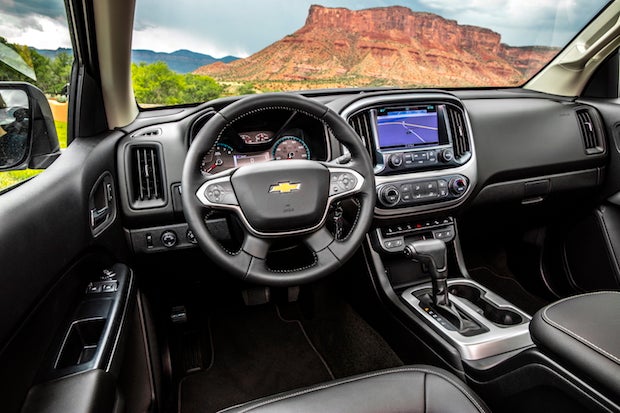
For infotainment, MyLink in the Chevy is simple, well laid out and responsive. Toyota's infotainment system is certainly plainer and boring looking than the Chevy, while its screens are more convoluted and not as logically laid out.
Price
The Tacoma TRD Pro with a six-speed manual transmission will sell for $41,215, while adding an automatic brings the price up to $43,215.
At the base level, the Colorado is a little cheaper starting at $40,995. Once you start adding options though, like the $3500 diesel engine, this truck can get more expensive quick. Our tester also came with a set of sport bars from Chevy accessories, driving the price up to $47,265.
The Verdict
It's an amazing time to be an off-road enthusiast thanks to packages like TRD Pro and ZR2. Both of these trucks offer excellent suspension tuning, great off-road technology and serious gear to make sure that they can deliver smiles on the dirt for miles to come.
But one is certainly a better truck than the other. Its suspension delivers better when barrelling over the roughest terrain, while it can also stay stiff to keep things calm on the highway. Two locking differentials can carry you through the muddiest of bogs and aggressive tires grab the earth.
So if you're looking for the truck that is more liveable every day and can deliver your Baja dreams on the weekend, you have to go with the Colorado ZR2.

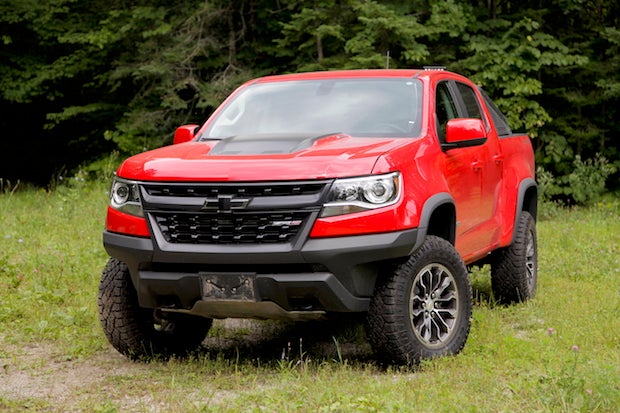
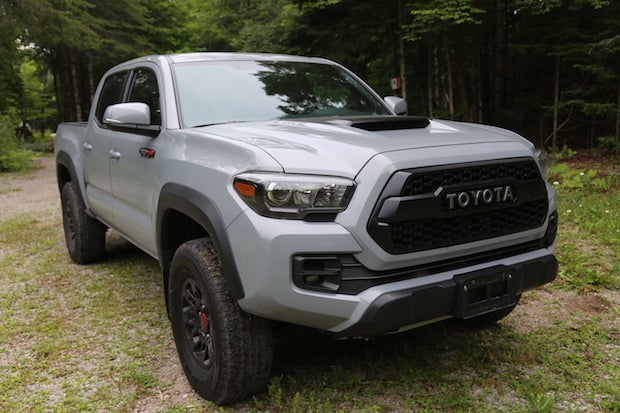
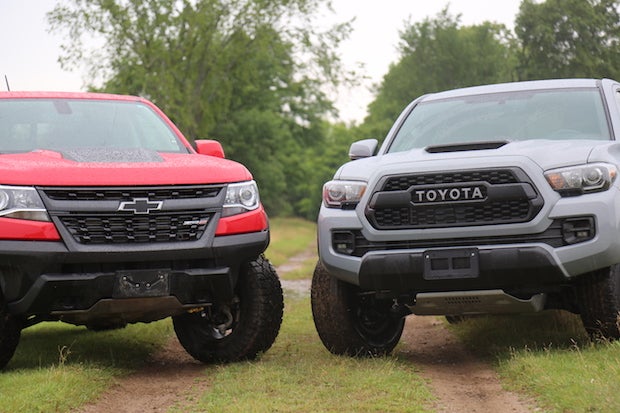
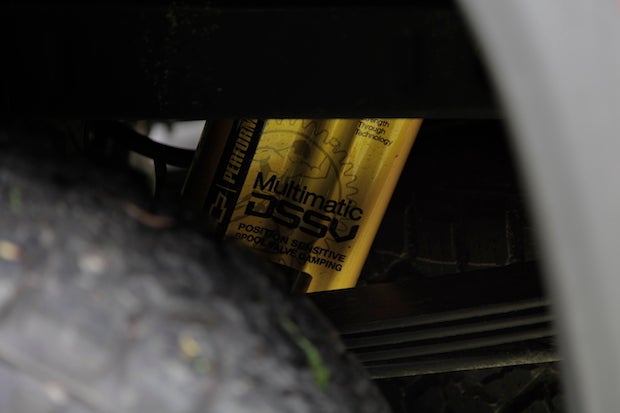
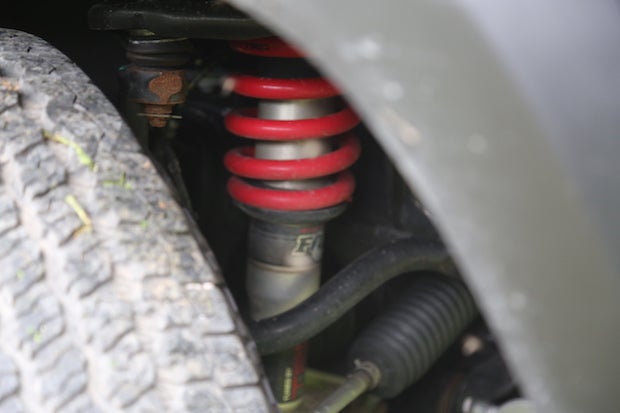
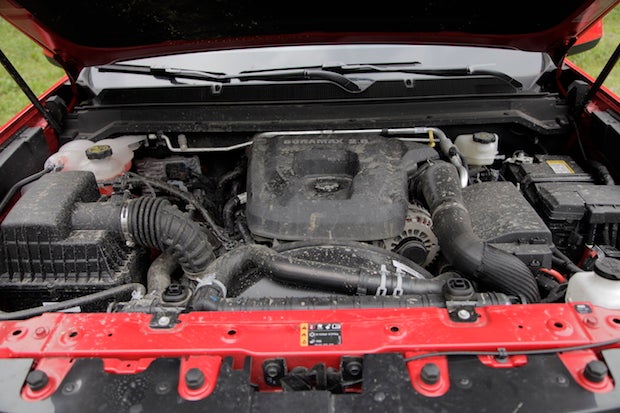
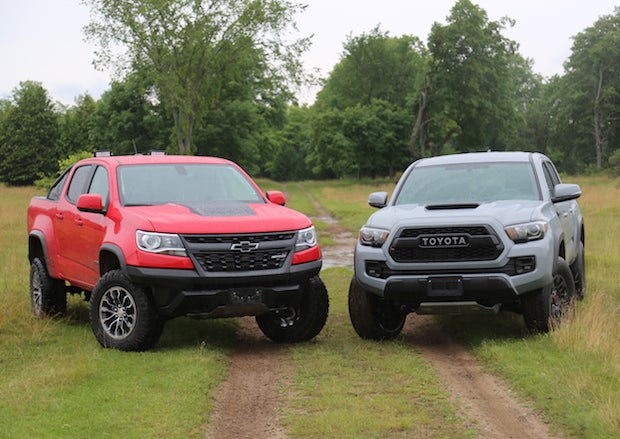

 Your Privacy Choices
Your Privacy Choices